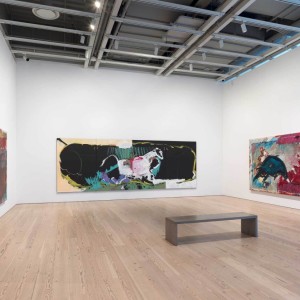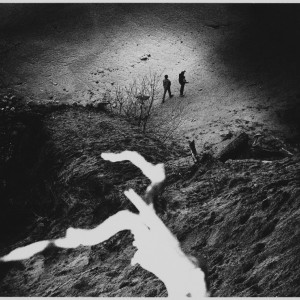
August 2024
#165
Notably absent from this issue on Photography is the documentary image, with the exception of the atypical/typical but so fine representations of Canada, both by noted photographers Geoffrey James and Phil Bergerson: unpeopled, vast, nicely abject, spare and humble and in a palette irresistibly elegiac. Yup, that’s the Canada we love.
Beyond the surface of things, which is initially what photographs give us, there are deeper roots and connections that link the broad-ranging material in this issue. The draw to photographs, even though we know they offer only some of the truth or some form of it, is the way they echo but also prompt memory. Mediums and history are called up by their Ouija board surface. Knock, hover, query, weep or entreat—the images tell us some truths and some stories.
In the rapid and alarming wash that current culture is, artists are always the seers, in the avant-garde, and they are saying to us in this special issue on Photography, that some firm ground can be found by looking in—to the self, to their own cultural history. Read the issue and find self-portraiture and autobiography and cultural biographies held close to the teller.
Canadian photographer Sandra Brewster reflects on her body of work, “Blur,” photographs that slide and slip on the surface, by intent, but hold the viewer. She says, in her interview, “When Édouard Glissant talks about opacity and the need to hold back, to not expose everything about yourself and the need for everybody to be okay with that he is very much in line with what “Blur” is.” Canadian photographer, Dana Claxton, is, as her interview in this issue suggests, fuelled by beauty and rage—with which she deals effectively, persistently and with passion and elegance.
American photographer Renée Cox is herself an iconic image and figure. Her series, “Yo Mama,” which began with her self-portrait, where she is powerful, naked, in stiletto heels, holding her infant son—was included in the groundbreaking exhibition, “Bad Girls,” at the New Museum in 1994. Nothing has held her back in her mission to make the Black body rightly visible.
New York writer and curator Jarrett Earnest has written a poignant, funny and information-full profile of Steven Arnold, a photographer, filmmaker, designer and innovative visual genius, who lived and worked in San Francisco in the early 1970s and ’80s. The legendary publisher Twelvetrees Press produced Steven Arnold’s Epiphanies, in 1987. About the book and Arnold’s work, Jarrett Earnest writes; “These are the images in which no self is singular, no gender binary, where life itself is just silly with sacredness.”
This whole issue on Photography is rich on the subject: Sara Angelucci’s gardens of earthly delights; distinguished writer and essayist Mark Kingwell’s stunning and alarmingly prescient essay, “Intolerable Beauty,” on what photographs can predict and do; naughty and so wickedly clever VALIE EXPORT shows us; Nancy Holt’s photographs indicate with substantial beauty her attempts to create her own system of perception; and American-born Canadian photographer June Clark calls on memory to say to herself and us who she is and what her significant sources were, often using her once-revered Stars and Stripes to interrogate her own history. Looking at her work you know the personal is always political.
In this issue’s Portfolio, “Aura Lost and Regained,” photographer Gonzalo Reyes Rodriguez, uses images found and taken and stages them on mobile structures, describing them as a charting of ideas and recollections, autobiographies of a sort. And in every issue, we have PictureLibrary—Barry Schwabsky’s erudite and engaging writing on new books of photographs produced often in small editions as artists’ books. As well, there is Border Crossings’ review section—our grasp happily exceeding our reach—varied, broad and current.
Buy NowTable of Contents
-
Bordernotes
Janet Malcolm: Still Angry After All These Years -
Borderviews
Picturing Boundaries - Thinking through the Body
- The Trace of History
-
PictureLibrary
Barry Schwabsky’s PictureLibrary: Surfaces and Distances Christina Arza, Maude Arsenault, Mikael Levin, Linda Troeller -
Bordercolumn
The Artfully Talented Mr. Ripley’s “Ripley” A Netflix TV series, 8 Episodes, 2024, written and directed by Steven Zaillian -
Interviews
Fuelled by Beauty and Rage An interview with Dana Claxton - Blurred Beauty An interview with Sandra Brewster
- Growing the Knowledge of Photography An Interview with Sara Angelucci
- Trouble Shooter An interview with Renée Cox
- Perseverance Sweet The Art of June Clark
-
Articles
Angel of History: The Astonishing and Storied Art of Steven Arnold - Seeing VALIE EXPORT Photographically
- Nancy Holt’s Incessant Motions
-
Essay
Intolerable Beauty -
Portfolio
Aura Lost and Regained -
Crossovers
Wanda Koop - Nick Sikkuark
- Thomas Hirschhorn
- Caroline Mousseau
- Dawson City International Short Film Festival
- Whitney Biennial
- Kan Azuma
- Micah Lexier
- “Georgia O’Keeffe and Henry Moore: Giants of Modern Art”
- Jennifer Wanner
- Gathie Falk
- Brenda Draney
- “Ron Shuebrook and Frances Thomas: In Conversation”
- Bertram Brooker
- Shelley Niro
























